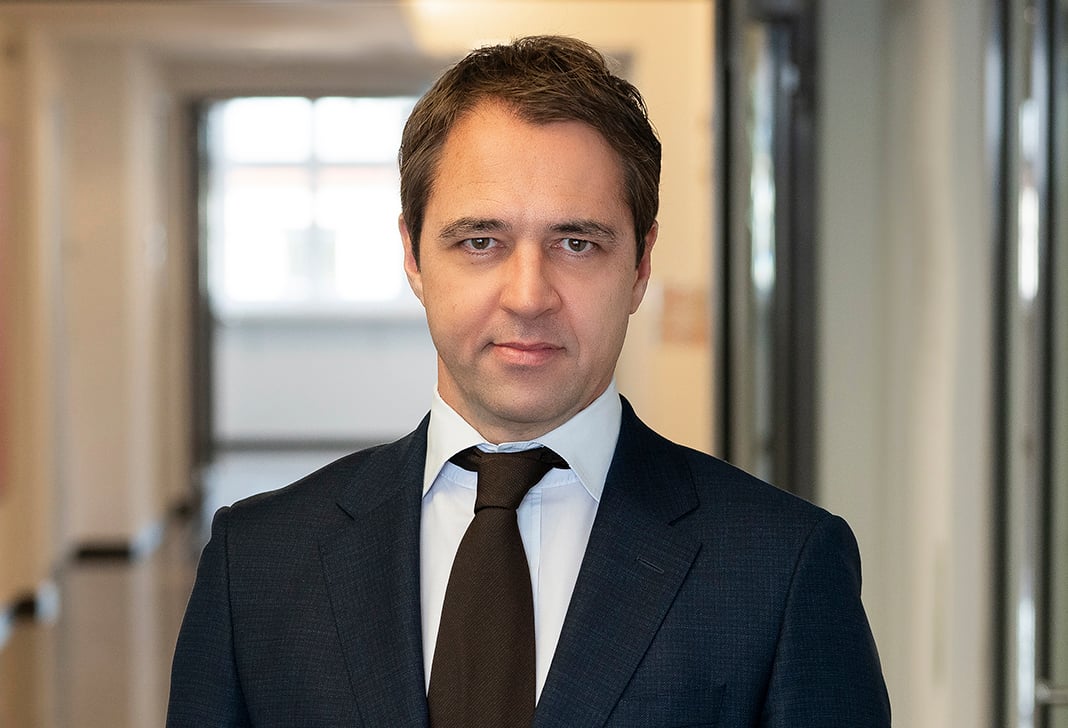Upcoming Reform of the European Trademark System: EU Adopts Proposals for Revision
In March 2013, 25 years after the commencement of the harmonization process in the EU, the European Commission adopted and published its long-awaited proposals for a revision of the European trademark system. Strictly speaking, the proposed package combines three separate initiatives:
- Recast of the 1989 Harmonisation Directive (now codified as Directive 2008/95/EC) approximating the laws of the Member States relating to trademarks and thus giving guidance for European Member States’ trademark laws;[1]
- Revision of the 1994 Regulation (now codified as Council Regulation (EC) No. 207/2009) on the Community trademark, governing the Office for Harmonization in the Internal Market ("OHIM") and the Community trademark ("CTM");[2] and
- Revision of the 1995 Commission Regulation (EC) No. 2869/95 on the fees payable to OHIM, basically proposing a fee reduction for filings and renewals for trademarks only claiming one or two Nice classes.
These revisions would be a minor upgrading, streamlining, and modernizing of the current law. As a consequence, the proposed changes do not represent a major overhaul of the existing system, but nonetheless, there are several key changes that will impact brand owners, particularly in relation to procedural issues and dealing with counterfeited goods. While it is too early to foresee to what extent the current proposals will eventually be passed by the competent European legislative bodies, this Commentary discusses some key points and what to expect going forward.
Designation and Classification of Goods and Services
As a consequence of the ruling by the Court of Justice of the European Union in Case C 307/10 Chartered Institute of Patent Attorneys v. Registrar of Trademarks, the so-called "IP Translator" decision, the currently rather short article 28 of the CTM Regulation will be completely redrafted to comprehensively regulate the classification of goods and services. The first subsection requires that the goods and services encompassed by the trademark application will continue to be classified in accordance with the Nice Agreement. However, subsection 2 prescribes that the identification of the goods and services for which protection is sought must be sufficiently clear and precise to allow the relevant authorities and businesses to determine the scope of protection the trademark confers. The general indications of the class heading of the Nice Classification may be relied upon, provided they are sufficiently clear and precise. To the extent that the applicant relies on the class headings of the Nice Classification, this is to be interpreted as encompassing all goods and services clearly covered by the literal meaning of the term. A transition period has been granted in the favor of applications filed prior to the date of publication of the Agency’s new classification practice, i.e., June 2, 2012, to adapt their specifications of goods and services in accordance with the described standards to ensure that the content of the register meets the requisite standard of clarity and precision.
Genuine Use of CTMs
In order to enjoy legal protection, CTMs have to be genuinely used after five years beginning from their registration date. Since the EU consists of 28 Member States, the question regarding the territorial extent of the necessary use is vital for trademark owners. On September 19, 2012, the Court of Justice of the European Union handed down its judgment in Case C-149/11 Leno Merken BV v. Hagelkruis Beheer BV, the so-called "ONEL/OMEL" case. In essence, the court held that the national borders of the EU member states have to be disregarded in the assessment of "genuine use in the Community" within the meaning of article 15 (1) of the CTM Regulation. Despite this clear reasoning, the court has not set up clear criteria in terms of the territorial scope of the necessary use. Instead, the court has stressed that reference should be taken to "all the facts and circumstances relevant to establishing whether the commercial exploitation of the mark serves to create or maintain market shares for the goods or services for which it was registered." Basically, the relevant assessment must take the following into consideration:
- The essential function of a trademark to guarantee the identity of the origin of the goods or services for which it is registered, and
- The purpose of creating or maintaining market share for the goods or services protected.
Although the court judgment makes clear that genuine use cannot be limited by national borders, it is still not clear to what extent a cross-border use is necessary in order to maintain the rights from the registration. The judgment simply indicates that it would be reasonable to expect that the use should be in a larger geographical area than that of a national mark, but this statement is not carved in stone either.
The proposals for amending the CTM Regulation within the initial package do not tackle this question of genuine use. The only amendments in this respect relate to trademarks where the use differs from the registered form and the clarification that the use solely for expert purposes should be regarded as sufficient use. Apart from this, although one might have expected comments on the question of the territorial scope of "genuine use," further guidelines for trademark owners appear to be missing.
Therefore, trademark owners should bear in mind that there is a dichotomy between marks on a national level and EU trademarks, both covering different geographical areas. The working paper refers to national trademarks as providing the "indispensible alternative" to EU-wide protective rights. This means that, in the long run, national trademarks will remain important as a natural choice for companies with activities not at the full scale of the EU. Trademark owners may run into risks if they cannot put forward sufficient evidence to show that the market shares they cover by using their mark can be set in relation to the market share of the EU in total. Whenever there is doubt as to whether such market share can be shown, owners should consider using national trademarks in the important territories, at least as a fallback position to an EU trademark in case it will not be possible in the future to show "genuine use" across the whole EU.
Intermediate Rights
The initial package also contains a proposal on the question of so-called "Intermediate Rights" and their relation to earlier trademarks. The proposal adopts the German and Benelux approach, which means that Intermediate Rights will coexist with earlier trademarks. In other words, once an Intermediate Right comes into existence, the proprietor of an earlier trademark will not be entitled to prohibit use of Intermediate Rights and vice versa. The initial package provides for an introduction of a new article 13a to the CTM Regulation and amends article 18 of the Trademark Directive accordingly.
Intermediate rights may emerge in particular in the following situation. One may apply for new registration of a trademark that is identical or confusingly similar to earlier national or Community trademarks. If such earlier trademarks have not been genuinely used within a continuous period of five years, the proprietor of the earlier trademark may not oppose the registration, and the new registration constitutes an Intermediate Right. If the trademark proprietor of the earlier trademark starts or resumes genuine use of the trademark before an application for revocation for non-use of the earlier trademark is filed, the earlier trademark and the Intermediate Right will coexist.
The current CTM Regulation does not contain any such provisions on the relationship of earlier trademarks with a CTM registered during non-use, and thus the new proposal clarifies how to deal with such situations. In practice, the proposal of the initial package means that the legal position of the proprietor of an Intermediate Right is strengthened. It is clearly regulated that the proprietor of an earlier CTM, after he starts or resumes genuine use, may not oppose the use of Intermediate Rights. As a consequence, trademark owners should make sure that all valued trademarks of their portfolio are in use or at least use can be proven within the last five years, in case these trademark owners have plans to reuse or sell such valuable trademarks in the near future.
What’s Next
The proposals of the initial package are currently being reviewed in parallel and according to their separate procedural rules by the European Parliament, representing European interests, and the Council, advocating national interests. The goal is that both bodies reach a common position at the end of their respective review process. Taking the European elections in May 2014 into account, it remains to be seen whether the legislative process directed toward formally adopting the new CTM package can be finalized before the summer of 2014. The Member States will then have two years to convert the new rules of the Directive into national law. As regards the amended Fees Regulation, this change is still likely to come into effect before the end of 2013 or early 2014.
Lawyer Contacts
For further information, please contact your principal Firm representative or one of the lawyers listed below. General email messages may be sent using our "Contact Us" form, which can be found at www.jonesday.com.
Andreas Ebert-Weidenfeller
Frankfurt
+49.69.9726.3939
aebert@jonesday.com
Marc F-X Groebl
Munich
+49.89.20.60.42.200
mgroebl@jonesday.com
Jakob Guhn
Düsseldorf
+49.211.5406.5500
jguhn@jonesday.com
Jones Day publications should not be construed as legal advice on any specific facts or circumstances. The contents are intended for general information purposes only and may not be quoted or referred to in any other publication or proceeding without the prior written consent of the Firm, to be given or withheld at our discretion. To request reprint permission for any of our publications, please use our "Contact Us" form, which can be found on our web site at www.jonesday.com. The mailing of this publication is not intended to create, and receipt of it does not constitute, an attorney-client relationship. The views set forth herein are the personal views of the authors and do not necessarily reflect those of the Firm.
[1] Proposal for a Directive of the European Parliament and of the Council to approximate the laws of the Member States relating to trade marks (Recast), COM(2013) 162 final of 27 March 2013.
[2] Proposal for a Regulation of the European Parliament and of the Council amending Council Regulation (EC) No 207/2009 on the Community trade mark, COM(2013) 161 final of 27 March 2013.



